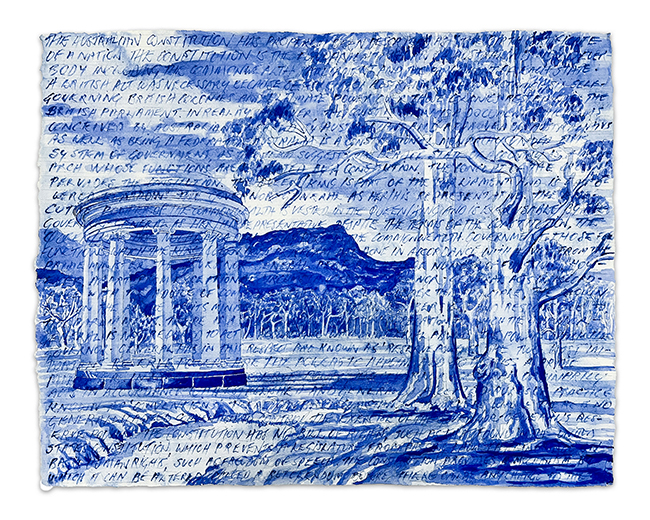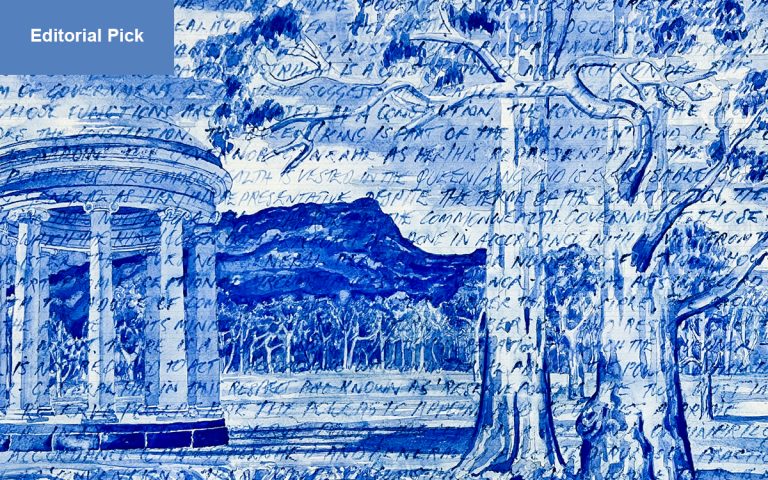Sebastian Di Mauro, an artist hailing from Australia, embarked on a transformative journey to the United States, a land far from his homeland. In this new environment, he discovered not only the intricate interplay of identity but also a way to express it through art.
His move to the USA was not simply a relocation but a personal transformation. Guided by his spouse, who calls Wilmington, Delaware home, Di Mauro set out to explore a nation layered with contradictions. Like many who grew up in Australia, he had absorbed an idea of America through television and film—images of possibility, promise, and the so-called American Dream. Yet the reality he encountered was more complicated. Distanced from his family and lifelong friends, he confronted questions of identity and belonging more intensely. That tension between place, memory, and distance now shapes his work, giving it a tone both personal and expansive.

A Body of Work Rooted in Material
Di Mauro’s art often begins with material. He has worked across sculpture, installation, and surface-based forms, experimenting with the textures and meanings of different mediums. This material-first approach reflects his ongoing dialogue with place. In Australia, much of his work drew on landscape—grass, foliage, and organic forms—translated into sculpture. In America, that attention to texture and environment remains but is filtered through the experience of displacement and reinterpretation.
What makes his work distinct is not just its visual presence but the way it negotiates identity through material. For Di Mauro, materials carry memory. Surfaces and textures are not neutral; they echo histories, places, and cultural codes. By reworking them, he positions himself within new contexts, finding ways to speak about belonging and estrangement.
Shifting Contexts
The move from Australia to the United States shifted his practice. He left behind familiar landscapes and cultural cues, stepping into an environment that demanded new readings. This sense of being both inside and outside shapes much of his work. In Delaware and beyond, he confronts the structures of American culture—suburban architecture, industrial materials, and the weight of cultural expectation.
Rather than simply documenting or mimicking these influences, he bends them into something hybrid. His art becomes a negotiation between the Australian sensibility he carries and the American environment in which he now lives. That duality, sometimes uneasy, sometimes seamless, forms the heart of his creative process.
The Question of Identity
At its core, Di Mauro’s work asks: What does it mean to belong? His art resists simple answers. Instead, it stages identity as something layered, contingent, and in flux. His personal distance from his family in Australia adds another layer. Art becomes a space where absence is felt as much as presence.
This is not nostalgia in the usual sense. His work doesn’t try to recreate a lost home. Instead, it accepts distance and uses it to create new forms. It is about finding identity in transition, not in stasis. That perspective allows his art to speak broadly to themes of migration, displacement, and cultural hybridity.
Material and Memory
Di Mauro’s installations often invite viewers to think about the way materials hold meaning. Paper, fabric, grass, or steel—each carries connotations. By arranging and reshaping them, he explores how memory and identity can be embedded in surface and form. His works sometimes resemble environments, spaces to be entered rather than images to be looked at.
That immersive quality underscores the idea that identity is not fixed but lived—something you move through, something shaped by context. In this way, his art is less about representation and more about experience.
Between Australia and America
The tension between Australia and America remains a through-line. Australia gave him grounding: wide landscapes, cultural distance, and the perspective of growing up in a place both connected to and apart from the world’s cultural centers. America presents contrast: density, diversity, contradictions of wealth and poverty, aspiration and struggle.
Living between these two places, Di Mauro creates art that reflects both. He carries one culture while living in another, and that layered experience translates into forms that are hybrid, open-ended, and unresolved. That lack of resolution is central—it allows his art to remain alive, responsive, and in motion.
Sebastian Di Mauro’s journey from Australia to the United States is not just personal biography—it is the lens through which his art unfolds. His work embodies the negotiation between belonging and distance, between homeland and adopted home, between memory and present reality. By grounding identity in material and place, he creates art that is both deeply personal and broadly resonant. It is art born from transition, rooted in the textures of two worlds.

